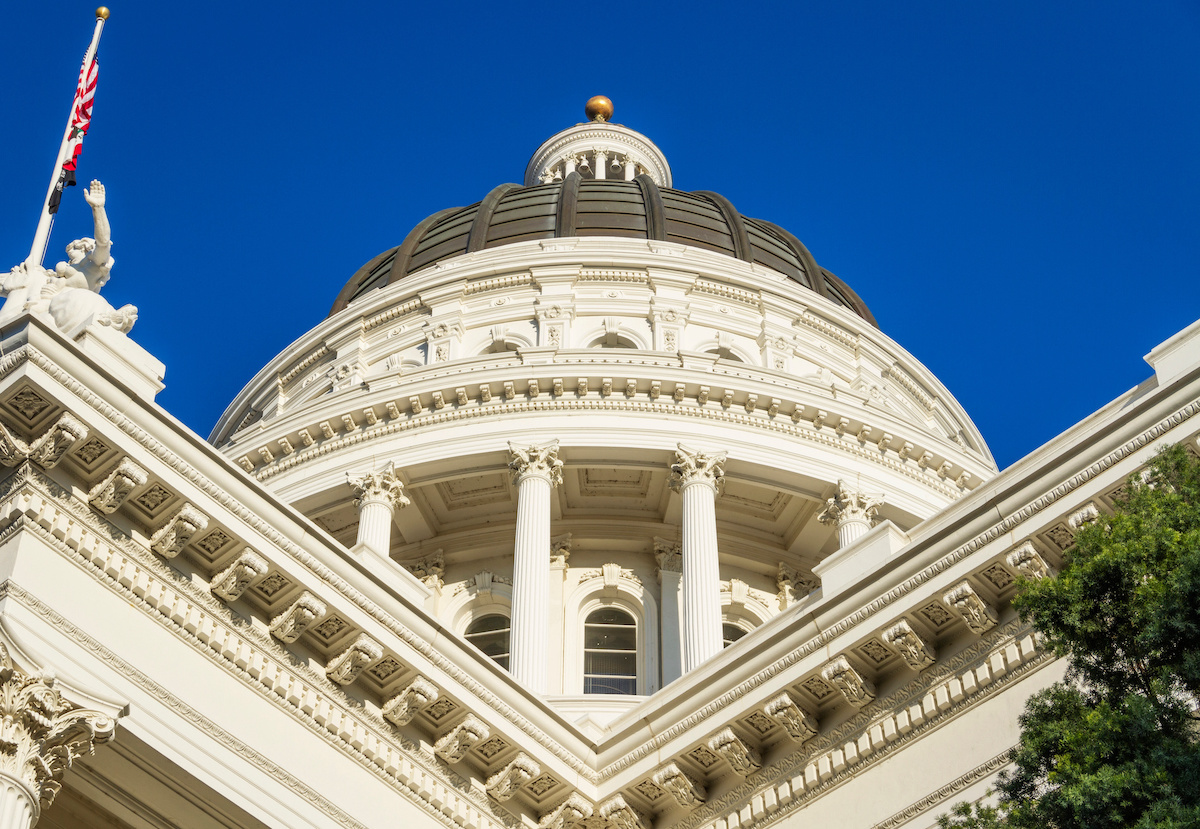The California legislative session concluded on August 31 after lawmakers worked swiftly to accomplish several priorities.
Most bills that passed both chambers this year aligned closely with Governor Gavin Newsom’s extensive legislative agenda. His more significant focus on Sacramento was a stark shift from prior years when he pursued many policy changes through executive orders and the budgetary process.
Newsom’s most visible proposal: CARE Court – short for Community Assistance, Recovery, and Empowerment Court – compels individuals with serious mental health issues to seek care and housing.
The big picture: One of just eight states with a veto-proof Democratic majority in both chambers, California has pushed forward with significant legislative action on healthcare, public safety, education, the environment, and more.
1. The $308 Billion Budget
The “California Blueprint” proposal, unveiled by Gov. Newsom on January 10, featured an estimated $29 billion surplus due to higher-than-expected revenue collections in the past year.
Newsom then proposed his “May Revision” budget on May 13 with an even higher surplus of $52 billion – thanks to unprecedented growth in revenue collections and prior legislative action.
The California Legislature on June 29 passed the final $308 billion budget package, including:
- Expanded healthcare coverage for undocumented immigrants and universal preschool access in California
- $2 billion to respond to current drought conditions and prepare for future droughts
- Several billion dollars to produce zero-emission vehicles and mitigate wildfires
- $117 million in extra funding for schools and community colleges
2. More Funding for Healthcare
The approved budget includes one-time payments for healthcare professionals working in hospitals and skilled nursing facilities, intended to encourage retention in this essential field.
The Children and Youth Behavioral Health Initiative will receive most of a $2 billion commitment for behavioral health services.
- The initiative will establish a clinically enhanced housing program for people experiencing homelessness and who have serious behavioral health conditions.
3. New Testing Requirements
Until this year, California law has maintained few requirements for drawing blood. That changes with a new law requiring blood to be drawn in the presence of a trained professional.
Fentanyl overdoses have run rampant across America, with more Californians dying from the drug each year than in any other state. Lawmakers amended the California Health and Safety Code so anyone can buy equipment that tests for the presence of fentanyl or other harmful materials.
4. Office of Health Care Affordability
Senate Bill 184 – signed by Gov. Newsom on June 30 – created the new Office of Health Care Affordability.
This new state division will scrutinize transactions involving healthcare payers, providers, and integrated delivery systems scheduled to close on or after April 1, 2024.
OHCA will determine whether transactions could significantly impact the healthcare landscape in terms of:
- Market competition
- The state’s ability to meet cost targets
- Costs for purchasers and consumers
5. Privacy Changes
HIPAA for Apps – A new law classifies managers of mental health apps as healthcare providers for anything pertaining to privacy under state regulations. Under the California Confidentiality of Medical Information Act (CMIA), mental health apps will be subject to HIPAA-like constraints on their ability to use, collect, and share patients’ health data. The legislation increases litigation exposure.
Lawmakers also passed the California Age-Appropriate Design Code Act, requiring businesses to implement stringent safety and privacy protections if they provide online services, products, or features to anyone under 18.
- The law bans collecting geolocation data and selling minors’ personal information.
6. Combating Climate Change
Legislators passed five of Gov. Newsom’s six proposed measures to combat climate change — largely fulfilling a cornerstone element of his legislative agenda. The approved legislation:
- Bans oil drilling within 3,200 feet (about 0.6 miles) of residential communities, schools, nursing homes, and hospitals
- Sets interim targets for renewable generation of retail electricity at 90% by 2035 and 95% by 2040 (in addition to current law requiring 100% by 2045)
- Extends operations of the Diablo Canyon nuclear power plant through 2030
- Sets stringent regulations for carbon capture, utilization, and storage projects in polluting industries
- Sets targets and develops standard tracking methods for greenhouse gas emissions and carbon sequestration
The only bill from the Governor’s climate change plan that did not pass was an ambitious attempt to decrease greenhouse gas emissions.
These initiatives came in response to a growing number of significant climate events affecting California — from extreme heat waves and wildfires to more frequent and prolonged periods of drought. Climate events have also degraded air quality and strained the state’s power grid, leading to increased health risks for vulnerable communities.
7. Housing Shortage
Converting Commercial – Developers can now bypass some permitting processes when building affordable and market-rate housing on underutilized commercial space. Assembly members said the legislation could eventually lead to approximately two million new housing units.
- Lawmakers also approved a bill requiring the Department of General Services to turn underutilized state office buildings into affordable housing.



